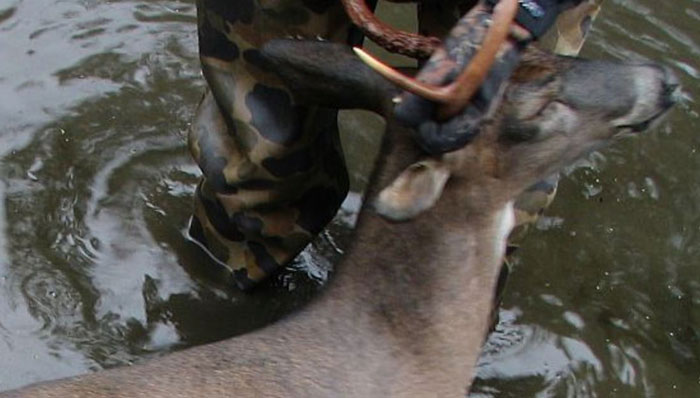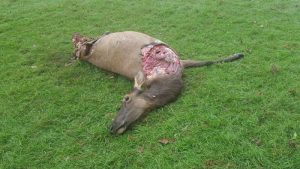SOUTH CHARLESTON, W.Va. (Release) — The West Virginia Division of Natural Resources has found deer in eight counties that have died from a hemorrhagic disease that causes extensive bleeding.
This year, deer in Boone, Brooke, Hancock, Lincoln, Marshall, Ohio, Tucker and Wayne counties have died from a disease caused by the Epizootic Hemorrhagic Disease Virus (EHDV). The disease has also been confirmed in deer herds in Kentucky, Ohio, Pennsylvania and Virginia this year. Hemorrhagic diseases can also be caused by the Blue Tongue Virus, but no BTV-infected deer have been detected in West Virginia.
This disease is not contagious to humans and EHDV is not related to chronic wasting disease, which has only been detected in Hampshire and Hardy counties.
“The disease disappears with the first frost because the spread of the virus is dependent on small midges called culicoides, which are killed by cold temperatures,” said Gary Foster, DNR’s assistant chief in charge of game management.
Samples from West Virginia were sent to the Southeastern Cooperative Wildlife Disease Study at the University of Georgia’s School of Veterinary Medicine, where the virus was isolated and identified. Although this disease usually does not have a major impact on the deer population, DNR is surveying the extent of the outbreak. EHDV may cause local reductions in the deer population by usually 20 percent or less.
Outbreaks of this disease do not affect West Virginia deer every year. The last large outbreaks occurred in 1996, 2002, 2007 and 2012. EHDV does not persist in deer that survive infection. Although hunters should never consume meat from an obviously sick animal, deer affected by EHDV are usually safe to eat. Landowners and hunters are urged to report sick or dead deer to their nearest DNR district office.




